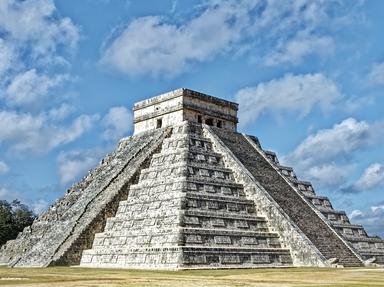Quiz Answer Key and Fun Facts
1. Guadalajara is the capital city of the state of Jalisco. Which of these lies just northeast of the city?
2. Which city of Jalisco is located on the Bahía de Banderas, the largest bay of Mexico?
3. The name "Jalisco" is derived from the Nahuatl word, "Xalisco" which means which of these?
4. Mexico's largest freshwater lake, Lake Chapala, lies on the border of Jalisco and which other state?
5. Which place in Jalisco is known for its small statue of the Virgin Mary, that was visited by Pope John Paul II in 1990?
6. Which of these is a nature reserve mainly in Jalisco, with a small portion lying in neighbouring Mexican state, Colima?
7. Jalisco produces the most pork products in Mexico. It also leads in production of which of these?
8. The town of Tequila, Jalisco, is known for the production of the drink of the same name. But what is the city's full name?
9. Los Guachimontones is an archaeological site of Jalisco located in the hills just outside which town?
10. Estadio Akron is the home ground of Jalisco professional football team, C.D. Guadalajara. Which city of Jalisco is this in?
11. Casa Kimberly is a hotel in Puerto Vallarta, Jalisco. It features a bronze sculpture of which of these two people?
12. Which of these cities of Jalisco is known for its handicrafts and pottery?.
13. Hospicio Cabañas is a museum, and was once one of the largest hospitals and orphanages in Latin America. Which city of Jalisco is it located in?
14. Which of these was opened to the public in Guadalajara in 2005?
15. Which of these is a church of Jalisco that Pope John Paul II visited in 1979?
16. Zona Romántica is an area south in the city of Puerto Vallarta. It features a statue of which of these animals drinking a margarita?
17. Juan Jesús Posadas Ocampo was an Archbishop of the Mexican Catholic Church. Where in Guadalajara was he assassinated in 1993?
18. The Acuario Michin Aqaurium is located in which city of Jalisco?
19. Which of these Mexican theatres was inaugurated in Guadalajara in 1866?
20. Which of these is held every November in Guadalajara?
Source: Author
LuH77
This quiz was reviewed by FunTrivia editor
agony before going online.
Any errors found in FunTrivia content are routinely corrected through our feedback system.
